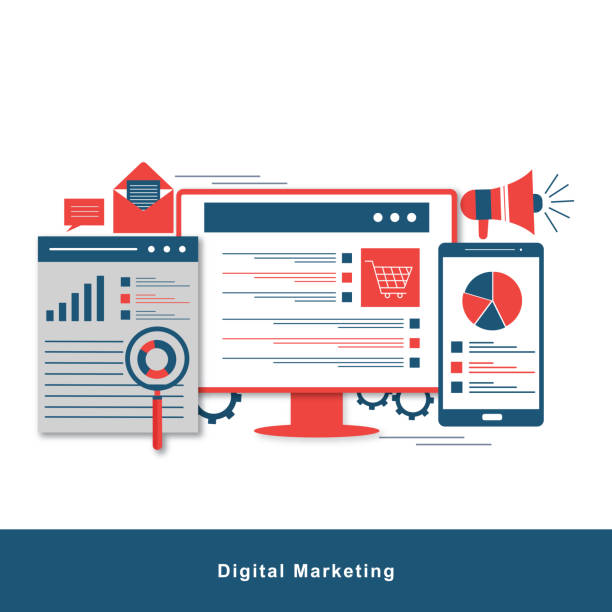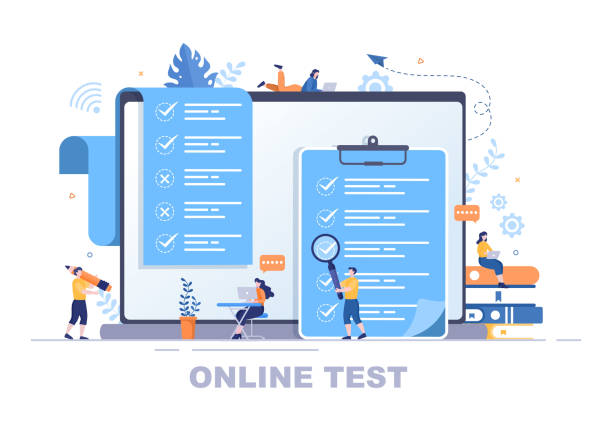The Importance of User-Friendly Website Design in Today’s World
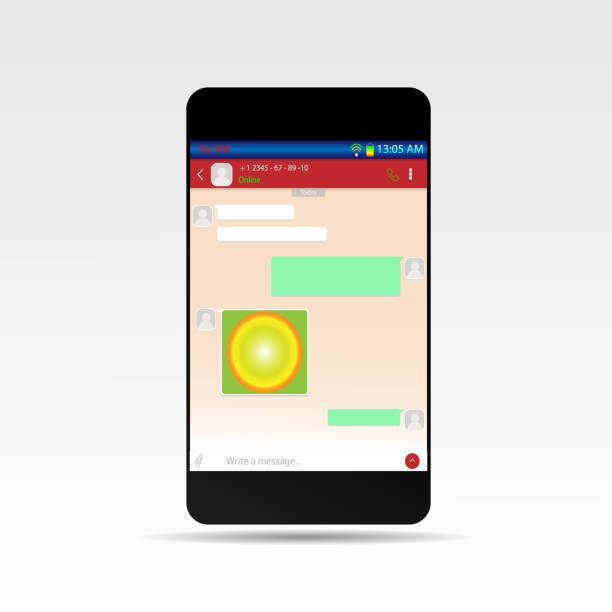
#Website_Design #User_Experience #Customer_Satisfaction
In the digital age, where competition in the online space is relentless, simply having a website is not enough; your website must have a user-friendly design to shine among a multitude of platforms.
The concept of user-friendly design means creating an environment where users can easily navigate without confusion, find the information they need, and achieve their goals.
This approach not only increases visitor satisfaction but also directly impacts your business success and objectives.
A website with complex navigation, slow loading speed, or disorganized design can quickly discourage users and push them towards competitors.
Therefore, investing in user-friendly website design means investing in the future of your business and customer loyalty.
This aspect of web design is no longer a luxury, but an undeniable necessity for any online entity.
The main goal is to reduce user friction and create a smooth and pleasant path to accessing information or services.
Today’s websites must be able to meet the evolving needs and expectations of users, hence, an educational and explanatory approach to deeply understanding this concept is essential.
By improving user experience, not only does the bounce rate decrease, but user engagement time on the site increases, leading to more positive interactions, which ultimately results in increased sales and return on investment.
User-friendly web design means understanding the audience’s needs and building a reliable bridge for their connection with your content and services.
Does your company’s website perform as befits your brand? In today’s competitive world, your website is your most important online tool. Rasaweb, specializing in professional corporate website design, helps you to:
✅ Build customer credibility and trust
✅ Convert website visitors into customers
⚡ Get a free consultation!
Key Principles in User-Friendly User Interface Design

#Design_Principles #User_Interface #Easy_Navigation
After understanding the importance of user-friendly website design, it’s necessary to delve into its fundamental principles, which form the main pillars of a successful user experience.
These principles not only guide designers but also serve as a criterion for evaluating the quality of a website.
The first principle is “simplicity and intuition”; meaning users should be able to understand and use the website’s functionality without much thought.
Complex navigation and confusing design elements quickly drive users away.
The second principle is “consistency and integration”; meaning similar elements throughout the website should function in the same way and have a consistent appearance.
This consistency creates a sense of familiarity and trust in the user.
“Appropriate feedback” is the third principle; users should receive a clear response from the system after every action they perform, for example, after clicking a button, its state changing, or a success message being displayed.
“Flexibility and efficiency” is another important principle that allows users to perform their tasks in various ways while providing shortcuts for advanced users.
Finally, the topic of accessibility means that the website should be usable for all individuals, including those with disabilities.
These principles form the foundation of a specialized design that not only encompasses visual beauty but also prioritizes functionality and usability.
Implementing these principles in user-centered website design helps create a pleasant and efficient experience that encourages users to return.
Each of these principles is important on its own, but it is their combination and harmony that truly make a website user-friendly.
Understanding the Target User with In-depth Research
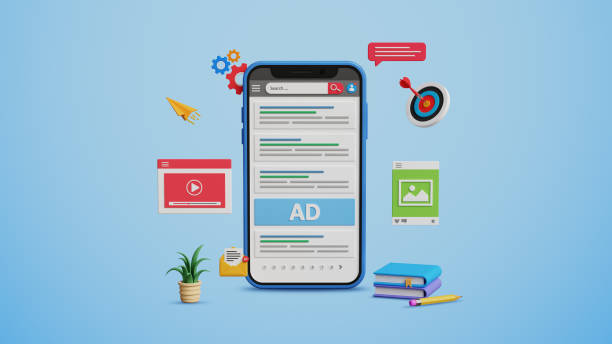
#User_Research #User_Persona #Needs_Assessment
No user-friendly website design will be complete without a deep understanding of the target user.
This analytical phase forms the foundation for all subsequent design decisions.
User research means gathering data and insights about the needs, behaviors, motivations, and challenges of the group of people who are expected to use your website.
There are various methods for conducting this research, each capable of revealing different aspects of the user experience.
In-depth interviews with potential users are a powerful tool for understanding their individual perspectives and emotions.
Surveys allow us to collect quantitative data from a large number of people, while direct observation of users in their natural environment reveals their real behaviors without bias.
Analyzing existing website data, such as Google Analytics, can show popular user behavior patterns and navigation paths.
From the results of this research, a “User Persona” is created; fictional but data-driven characters that represent your main user groups.
These personas include information such as age, occupation, goals, frustrations, and technological needs.
Accurate understanding of these personas helps us make design decisions based on real user needs, not assumptions.
This educational and research approach ensures that every element in the design, from layout to content, directly benefits the end-user and improves their experience.
By gaining a deeper understanding of the audience, we can create designs that truly connect with them and meet their needs.
| Method | Description | Primary Use |
|---|---|---|
| Interview | In-depth, face-to-face conversations with users to understand needs and perspectives. | Qualitative understanding, uncovering hidden needs. |
| Survey | Collecting quantitative data from a large number of users via questionnaires. | Validating hypotheses, measuring attitudes. |
| Observation (Ethnographic Study) | Observing user behavior in their natural environment or when using a product. | Understanding real behavior, identifying usability issues. |
| Web Analytics | Using tools like Google Analytics to monitor and analyze website traffic. | Identifying behavioral patterns, exit points. |
| Card Sorting | Users are asked to categorize concepts or content. | Designing information structure and navigation. |
Information Architecture and Smooth Navigation

#Information_Architecture #Site_Navigation #Easy_Navigation
One of the most vital pillars of a user-friendly website design is Information Architecture (IA).
IA means organizing and labeling content in a way that allows users to easily find the information they need and move through the site.
This goes beyond merely placing menus; it includes logically categorizing information, creating meaningful relationships between pages, and ensuring a logical flow from one section to another.
Poor information architecture, even with the most beautiful visual design, can frustrate users and lead them to exit.
The website’s Navigation System is the physical manifestation of IA.
Menus, internal links, breadcrumbs, and search functionality are all tools that help users find their way around the site.
Navigation must be consistent, clear, and accessible.
Every page should clearly show where the user is and how they can return to related pages or the homepage.
Designing an efficient navigation system is a specialized task that requires precise analysis of user needs and content structure.
Using tests like Card Sorting (as explained in the previous table) can help the design team understand how users think about information and how they expect content to be organized.
The ultimate goal is to create a smooth and obstacle-free navigation path that guides users from their entry point on the site to their ultimate goal (such as purchasing a product or finding information).
This is a guiding aspect in web design that directly impacts the overall user experience.
Does your current website build the trust that potential customers should have in your business? If the answer is no, it’s time to have your professional and impactful corporate website with Rasaweb.
✅ Fully custom design tailored to your brand identity
✅ Increased lead generation and business credibility in the eyes of customers⚡ Contact us for a free consultation!
Visual Design and Visual Appeal

#Visual_Design #Graphic_Interface #Beautiful_Experience
While technical and structural principles are crucial for user-friendly website design, visual appeal also plays a key role in attracting and retaining users.
Visual Design refers to the overall look and feel of a website and includes elements such as colors, fonts, images, icons, and whitespace.
A beautiful and harmonious visual design not only makes the site pleasant but also helps strengthen the brand and convey its message.
Choosing the right color palette can evoke specific emotions in the user; for example, blue colors usually convey a sense of trust and calmness, while red colors are more exciting.
Fonts should also be legible and consistent with the brand’s identity.
Images and videos must be high-quality and relevant to the content, and whitespace helps with readability and focus.
Visual design is not limited to aesthetics alone; it must be functional and contribute to improving the user experience.
For instance, intelligent use of contrast can highlight important information and improve visual hierarchy.
User Interface (UI) is an integral part of visual design that focuses on interactive elements such as buttons, forms, and bars.
A good UI should be intuitive, responsive, and accessible.
Observing web design trends can also be inspiring, but one should always remember that the primary goal is to improve user experience, not merely to follow fashion.
Ultimately, an engaging and attractive visual design can encourage users to spend more time on the site and delve deeper into the content, which itself signifies a truly user-friendly website design.
Content Strategy and Effective Communication
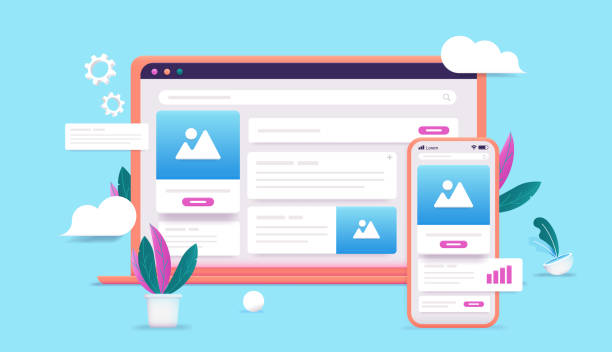
#Quality_Content #Copywriting #Clear_Communication
Content is the heart of any website, and without a strong content strategy, even the best user-friendly website design cannot be fully successful.
Content strategy means planning for the production, management, and distribution of text, image, and video content that is not only engaging but also answers users’ needs and questions and encourages them to take the desired action.
The first principle in user-friendly content is clarity and conciseness.
Online users are usually impatient and don’t have much time to read long and complex texts.
Therefore, information should be presented clearly, concisely, and in understandable language.
Using clear headings, short paragraphs, bulleted lists, and relevant images can significantly increase readability.
Copywriting also plays a vital role; the words used to describe products, services, or calls-to-action (CTAs) must be persuasive and motivating.
Good content not only provides information but also connects with the user and builds a sense of trust.
In this regard, the explanatory aspect of content is very important; clear explanations of how to use a product or service, answers to frequently asked questions, and step-by-step guides.
Furthermore, content must be aligned with SEO goals, meaning relevant keywords should be used to help the website achieve a better ranking in search engines.
Up-to-date and fresh content also helps maintain user interest and encourages them to return.
By combining a smart content strategy with user-friendly website design, a comprehensive and effective online experience can be created that captivates users and helps them achieve their goals.
This means delivering real value through words.
Technical Performance and Accessibility for All

#Loading_Speed #Optimization #Accessibility
Just as aesthetics and content are important, technical performance and website accessibility are also fundamental pillars of user-friendly website design.
Website loading speed is one of the most crucial factors in user experience.
Research shows that users expect a website to load within 2 to 3 seconds, and if there’s a longer delay, they quickly abandon it.
Slow speed not only harms the user experience but also negatively impacts SEO.
Optimizing images, compressing codes, using Content Delivery Networks (CDNs), and choosing a powerful hosting service are all factors that help improve site speed.
But beyond speed, the discussion of accessibility is crucial.
A user-friendly website should be usable for everyone, regardless of their physical abilities or technological limitations.
This includes individuals with visual, hearing, motor, or cognitive impairments.
Adhering to accessibility standards like WCAG (Web Content Accessibility Guidelines), developed by the W3C consortium, helps websites be usable for users with disabilities.
These measures include using alt text for images, semantic code structure, keyboard-based navigation, and appropriate color contrast.
News and updates in accessibility are constantly changing, so staying informed is essential for designers and developers.
The importance of these specialized aspects lies in ensuring a fair and inclusive online experience for all users.
Ignoring these issues can lead to losing a large segment of the audience and damaging the website’s credibility.
This social responsibility is an important part of modern user-friendly website design.
| Indicator | Description | How to Measure |
|---|---|---|
| Task Success Rate | The percentage of users who successfully complete a specific task on the site. | User observation, A/B tests, event analysis. |
| Time on Task | The amount of time users spend to complete a task. | Analytics tools, timed usability tests. |
| Error Rate | The number of errors users make while performing a task. | Observation, error reports in server logs, form field analysis. |
| Bounce Rate | The percentage of visitors who view only one page and then leave the site. | Web analytics tools (e.g., Google Analytics). |
| User Satisfaction | The level of user contentment with their experience on the site. | Surveys, satisfaction scales (e.g., SUS – System Usability Scale). |
Testing and Continuous Improvement of User Experience
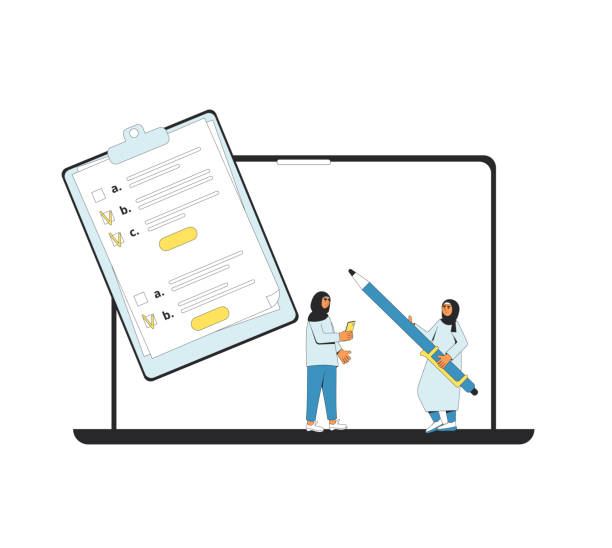
#Usability_Testing #User_Feedback #Continuous_Improvement
After implementing a user-friendly website design, the work is not over.
Websites are living, dynamic entities that require continuous testing and ongoing improvement.
This analytical and educational phase ensures how your design performs in the real world and where its weaknesses lie.
“Usability Testing” is a process in which real users interact with your website while you observe their behavior and collect their feedback.
These tests can be conducted in a laboratory setting or remotely.
Observing users as they perform specific tasks provides valuable insights into the obstacles and challenges they face.
After data collection, it’s time to analyze it to identify patterns and common weaknesses.
A/B testing is also a powerful optimization method where two or more versions of a page or design element are simultaneously shown to different groups of users to determine which version performs better.
This data-driven approach allows us to make decisions based on evidence, rather than guesswork.
Collecting user feedback through surveys, contact forms, and even social media is also crucial.
This feedback can include suggestions, complaints, or even compliments that help improve the overall experience.
Every piece of feedback is an opportunity for learning and refinement.
Continuous Improvement is a philosophy based on the idea that a website is never truly finished and there are always opportunities for betterment.
By repeating cycles of testing, analysis, and implementing changes, you can ensure that your website consistently provides a user-friendly and optimized experience.
This dynamic approach will keep your website on the path to long-term success.
How much does losing business leads due to an unprofessional site cost you? Solve this problem forever with professional corporate website design by Rasaweb!
✅ Increase credibility and trust among potential customers
✅ Easier acquisition of new business leads
⚡ Get a free consultation now!
Impact of User-Friendly Website Design on SEO and Business

#SEO_Friendly #Conversion_Rate #Google_Ranking
A user-friendly website design not only keeps users satisfied but also has profound impacts on business performance and its standing in search engines.
This section examines the analytical relationship between User Experience (UX) and SEO.
Search engines, especially Google, increasingly rely on user experience factors for ranking websites.
A website that loads quickly, has easy navigation, and provides relevant, high-quality content is more likely to achieve a higher rank in search results.
Factors such as a low bounce rate, high time on site, and click-through rate (CTR) from search results all send positive signals to search engines, indicating user satisfaction.
Good UX directly leads to better SEO. But the impact of user-friendly website design extends beyond SEO and directly affects business profitability.
Conversion Rate, which indicates the percentage of visitors who perform a desired action (e.g., purchase, sign-up, or form submission), significantly increases with improved UX.
When users can easily achieve their goals on the site, their likelihood of converting into customers or subscribers increases.
This translates to a higher Return on Investment (ROI) for the business.
Recent news in the web industry shows that companies are increasingly investing in UX as a key competitive advantage.
Ignoring user experience means losing growth opportunities and market share.
Ultimately, a user-friendly website design helps create a strong and positive brand that not only attracts more traffic but also results in more loyal customers and higher conversion rates.
The Future of Web Design and Innovations in User Experience
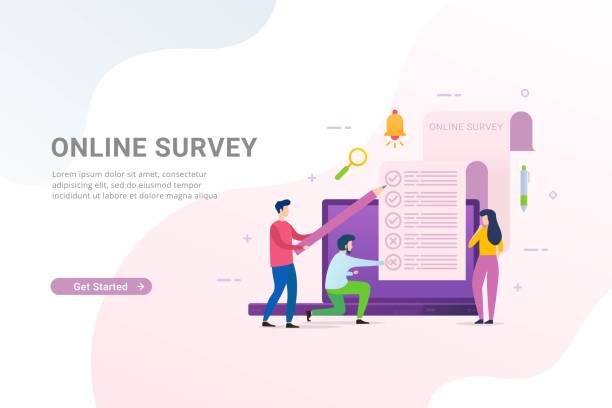
#Future_Trends #Artificial_Intelligence #Virtual_Reality
The world of web design and user experience is constantly evolving, and the future promises exciting innovations that will shape how we interact with the internet.
This section explores future trends and raises questions about the future direction of user-friendly website design.
One of the most important future trends is the deeper integration of Artificial Intelligence (AI) and Machine Learning (ML) into the user experience.
These technologies can offer more personalized experiences, such as smart content recommendations, advanced chatbots for customer support, and automatic optimization of site layouts based on user behavior.
This approach has the potential to create websites that literally “learn” and adapt to individual user needs.
Virtual Reality (VR) and Augmented Reality (AR) are also entering the web space and can provide entirely new and immersive experiences, from virtual property tours to trying on clothes online.
These technologies challenge the boundaries of user-friendly website design and raise questions about how to design three-dimensional and interactive user interfaces.
Voice User Interface (VUI) design is also gaining increasing importance with the proliferation of voice assistants like Siri and Alexa.
Websites must also be optimized for voice interaction, which requires a different approach to navigation design and information delivery.
Finally, the topic of “Web 3.0” and decentralized concepts also outlines a future where users have more control over their data and online experiences.
These developments are not only exciting but also challenge designers to rethink their traditional approaches and prepare to create websites that are not only user-friendly but also forward-thinking and aligned with emerging technologies.
This is an endless journey of innovation that opens new horizons for user-friendly website design.
Frequently Asked Questions
And other services of Rasaweb Advertising Agency in the field of advertising
Smart Direct Marketing: A novel service to improve SEO ranking through Google Ads management.
Smart Conversion Rate Optimization: An effective tool for online growth with custom programming.
Smart Advertorial (Reverberation): A creative platform to improve customer acquisition with marketing automation.
Smart Advertising Campaign: A novel service to increase click-through rate through SEO-driven content strategy.
Smart Brand Identity: A novel service to enhance customer behavior analysis through the use of real data.
And over a hundred other services in the field of internet advertising, advertising consultation, and organizational solutions
Internet Advertising | Advertising Strategy | Advertorial
References
Comprehensive Guide to User-Friendly Website DesignUser Experience for Digital SuccessWebsite Optimization for UsersPrinciples of Website Design for SEO
? Are you ready to transform your business in the digital world? Rasaweb Afarin Digital Marketing Agency, by offering professional services including WordPress website design and SEO optimization, paves your path to online success. Build a bright future for your brand with us.
📍 Tehran, Mirdamad Street, Next to Central Bank, Southern Kazeroun Alley, Ramin Alley, No. 6


